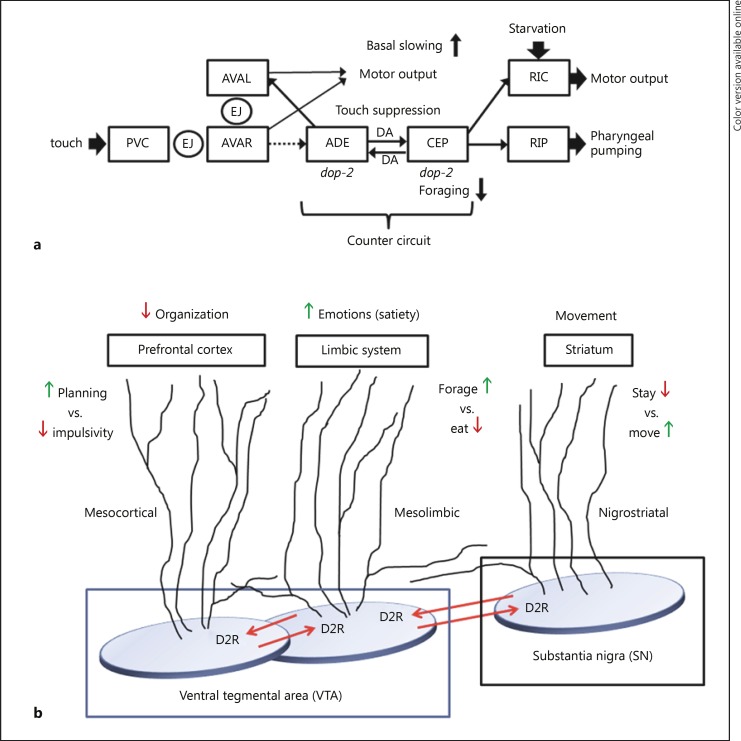Fig. 2.
Dopaminergic counter-circuit mediates opposing or contrary behaviors. a This scheme depicts neurons (three-letter designation in boxes) that connect the startle (touch) response to the only neuron, RIP, at the interface of the C. elegans head ganglia and the separate pharyngeal nervous system. The neuronal pathway that inhibits pumping has not been shown. To overcome startle suppression of pumping, the CEP neurons that innervate RIP must be inhibited. This is accomplished by dopamine (DA) released from ADE neurons acting through inhibitory D2 dopamine receptors (dop-2). The figure also shows how contrary behaviors, e.g. basal slowing vs. foraging, can be regulated by the counter-circuit. EJ refers to electrical or gap junctions between neurons. The dotted arrow from AVAR reflects an indirect connection to ADE mediated by additional neurons left out for simplicity. b Based on various studies [44,45,46,47], human brain dopaminergic pathways (labeled) appear to include counter-circuits in their neural architecture. The illustration represents a possible arrangement of local and trans-pathway collaterals that provide functional connections to regulate contrary behaviors. The striatum would mediate stay vs. move signals, whereas elements of the limbic pathway would promote foraging vs. eating. When the pathways act in concert, a person can either move and forage or stay and eat. Likewise, the mesocortical pathway can mediate planning and impulsivity in the prefrontal cortex, but not both at the same time. When one activity is high, dopamine release from that pathway will down-modulate the contrary activity. This arrangement is also a mechanism to fine tune ongoing activity in the primary pathway.

